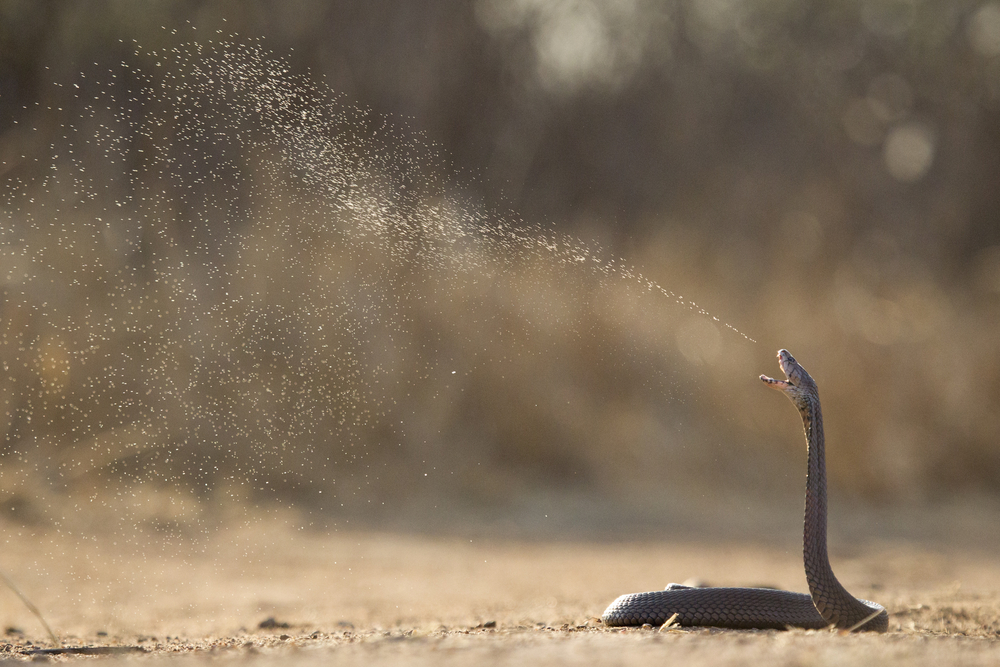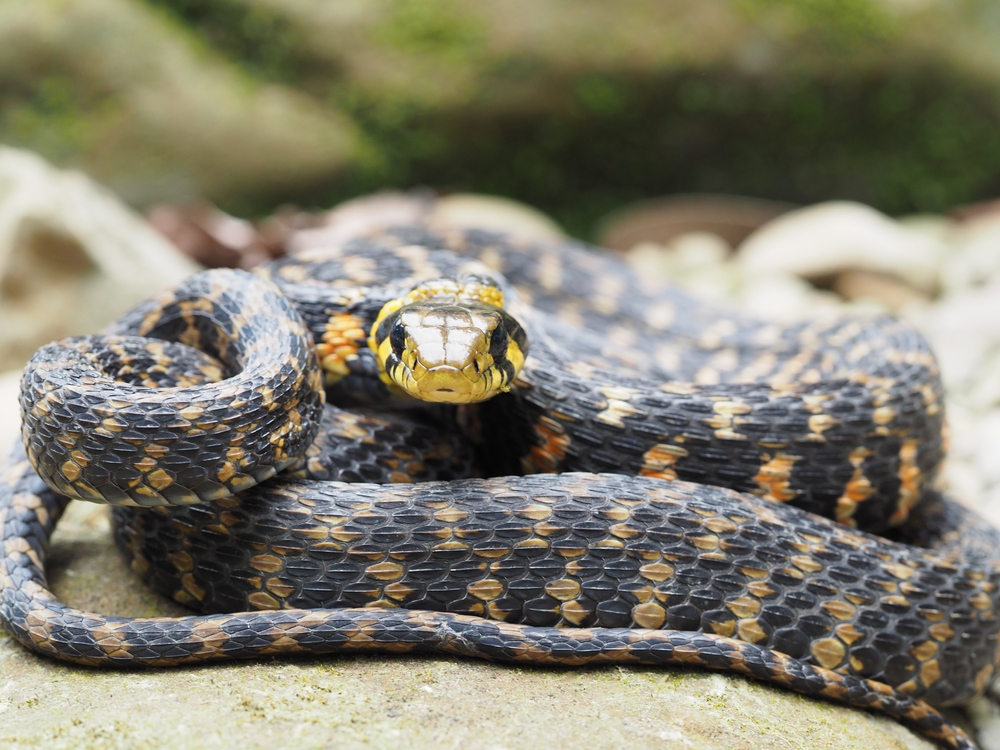Herpetology enthusiasts are quick to correct those that call snakes “poisonous” instead of “venomous.” But, what’s the difference and is it true that all snakes that possess venom are “venomous”?
Poisonous or Venomous?
“Poisonous” refers to a build up of toxins within a living organism, essentially making them dangerous to consume. Some berries, mushrooms, fish and frogs are poisonous. They pose no threat unless the toxins are ingested.
“Venomous” refers largely to the delivery method of toxins. A “venom” is created by the organism to be used in defence, hunting or other biological functions. A venomous animal is capable of injecting such venom into a potential threat. Vipers, spiders, centipedes and even platypuses are venomous.
Vipers, cobras, coral snakes, brownsnakes and blacksnakes are all venomous. Rear-fanged snakes like twig snakes, mangrove snakes, Montpellier snakes and other Colubrids and Psammophids are also venomous.

Poisonous AND venomous?
The Rhabdophis genus (keelbacks), found in Southeast Asia, are poisonous and venomous. They have evolved an immunity to the toxins in their primarily toad-rich diets. These toxins can then accumulate and be sequestered for the snake’s own defensive or offensive behaviours. The tiger keelback (R. tigrinus), utilises toxins in both the Duvernoy’s glands (venom glands in the head) and the nuchal glands (in the skin of the neck). This species is rear-fanged meaning that it can use venom to hunt its prey, and the rest of the toxins protect it from being eaten by predators.
Lifesaving Treatments
Venoms have evolved over millions of years to meet the specific needs of an animal. As such, they differ between species, localities and even the age of an animal.
Venoms are used to create antivenins to treat envenomation, but they also contain unique and interesting compounds and specialised proteins that we use in other medical research. Gila monster venom is used to create diabetes treatments, scorpion venom contains compounds to treat tuberculosis and Lancehead venom can treat cardiovascular disease.
The toxins we label as “poisons” in frogs and toads are equally complex and beneficial in medicine. Some fire-bellied toad and poison dart frog toxins are even used to make cancer treatments.
